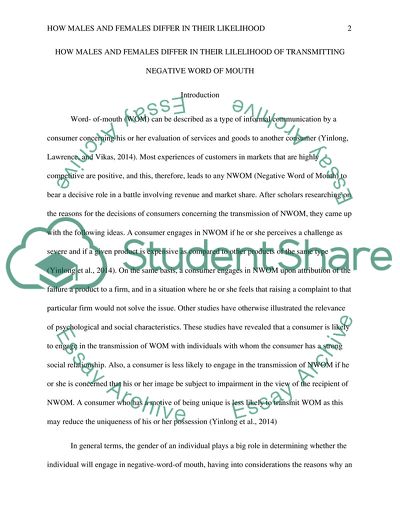How Males and Females Differ in Their Likelihood of Transmitting Article. https://studentshare.org/marketing/1870314-how-males-and-females-differ-in-their-likelihood-of-transmitting-negative-word-of-mouth
How Males and Females Differ in Their Likelihood of Transmitting Article. https://studentshare.org/marketing/1870314-how-males-and-females-differ-in-their-likelihood-of-transmitting-negative-word-of-mouth.


